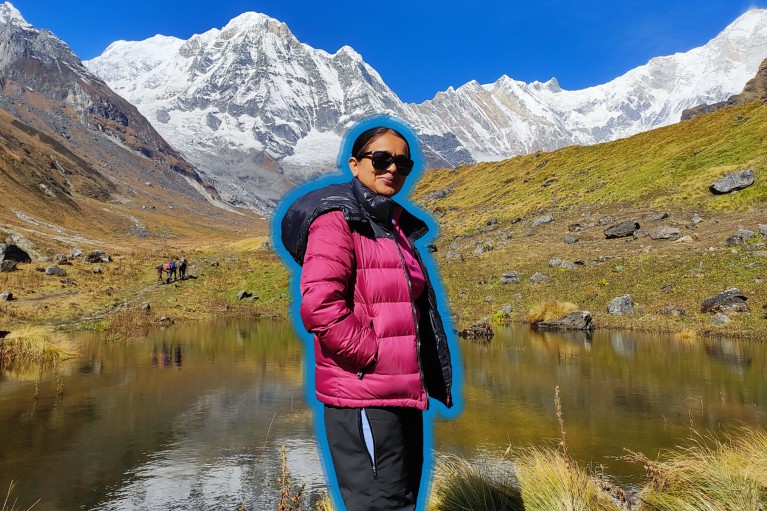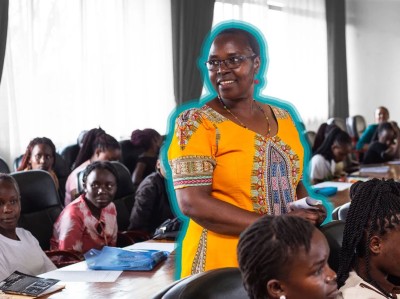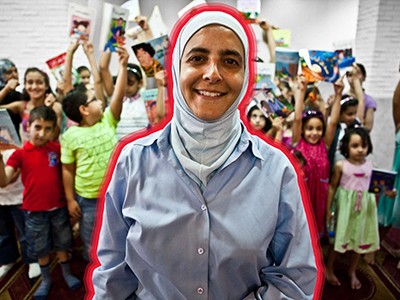

Babita Paudel travels Nepal to collect soil samples in high-altitude regions such as Annapurna and to run workshops for female scientists’ professional development.Credit: Rajaram Khang
During her PhD at the Korea Polar Research Institute in Incheon, South Korea, biochemist Babita Paudel studied antioxidant compounds from lichens and mosses that thrive in Antarctica. On returning to her home country, Nepal, she shifted to studying molecules produced by high-altitude microbes and medicinal plants found there. She co-founded the Center for Natural and Applied Sciences (CENAS) in Kathmandu, where she studies groups of bacteria called actinomycetes, known for producing compounds with antimicrobial activity. To isolate these bacteria, her team collected soil samples from extreme environments, including the base camps at Mount Everest and Annapurna, looking for potential products to combat multidrug-resistant pathogens.
Beyond her research, Paudel leads efforts to boost the numbers of women in science, technology, engineering and mathematics (STEM) careers in Nepal. Supported by the Alexander von Humboldt Foundation in Germany, her Women in STEM Nepal team travels across the country to conduct capacity-building training for early- and mid-career women. The team organizes sessions on academic writing, building CVs, professional networking and writing grant proposals. In addition, it created Nepal’s Women in STEM Nepal database, listing around 650 female researchers. The initiative has connected around 3,200 women interested in STEM careers. Paudel spoke to Nature about what inspired her to take the reins of this countrywide project.
What is the great passion that has driven you as a scientist?
What drives me to help female students to thrive at my Ugandan university
It wasn’t a singular event. From the start, my passion was fuelled by strong family support. My father was the principal at a public secondary school. I was a bright student and having good scores encouraged my family to support my science education. At that time, only a small number of female students opted for science subjects. There were very few female professors teaching STEM courses, but seeing their commitment — despite the major household responsibilities that Nepalese society puts on women — inspired me to continue my career as a scientist.
Who has been your biggest influence or mentor, and why?
I’ve been fortunate to have my husband as a significant influence and mentor. We both are researchers in biochemistry, and his unwavering support has enabled me to pursue my career despite the responsibilities of raising our two children.
When did you realize you wanted to tackle gender inequality in science?
In 2021, while participating in an event organized by the Nepal German Academic Association, an alumni body, I was asked to give a presentation on the status of women in science in Nepal. It took me a month to prepare that presentation because there wasn’t any proper database of women scientists. I had to meticulously review data from a government body, the University Grants Commission, and visit department home pages of each of Nepal’s universities to gather information. One 2010 statistic from the United Nations cultural organization UNESCO was particularly shocking: women comprised just 7.9% of the STEM workforce in Nepal, a proportion that was among the lowest in Asia. I realized the urgent need to do something about this.
Were there other surprises that came out of your work?
In Nepal, there is a substantial disparity for women in STEM owing to various social norms such as domestic and childcare responsibilities, the lack of female-friendly policies in the workplace, and insufficient capacity-building activities, inspiration and motivation.
I found that most Nepalese women in STEM tend to marry after completing their bachelor’s or master’s degrees. This often results in an academic break, one that often leads to a significant loss of confidence, contributing to imposter syndrome. I didn’t realize how pervasive this problem was until I started travelling the country and hearing women’s stories.
Also, Nepalese society is still patriarchal, and a lot of panel discussions at scientific conferences still tend to exclude female experts. I was surprised by the extent of this inequality. Women are expected to sacrifice the most, not just for their families, but also academically. Even women with advanced degrees often find themselves limited to sometimes entry-level, contract-limited and temporary lecturer positions in universities, with few opportunities for further promotion.
How does your initiative try to address these disparities?
I’m a Palestinian scientist building a more inclusive future
We are building capacity for female students in STEM careers and creating networks of female researchers. In 2022 and 2023, we organized 10 capacity-building activities across 7 provinces in Nepal, engaging 421 female researchers in workshops on professional networking, how to explore work and study opportunities, CV preparation, proposal writing and plagiarism in research. In addition, we hosted ten webinars and published a comprehensive database of national and international funding agencies, scholarships and fellowships on the CENAS website.
We also created a Facebook group for team members to network, and to disseminate information on scholarships, funding agencies and opportunities. The group has more than 4,000 members. In 2022 and 2023, we also provided travel grants for 25 female students and early-career researchers to participate in and present their research at national and international conferences across Nepal.








